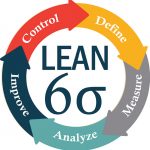Many people may consider that they are familiar with the term disruptive Innovation. Before attempting to discuss this topic, it would be prudent to first define what is innovation.
Definition of Innovation
The process of translating an idea or invention into either goods/products or services that creates value or for which customers will pay. Here customers can either be external customers or internal customers for example the ICT team can come up with an innovation which allows finance – accounts payable department process payments faster and efficiently reducing the number of people and time spent in processing.
To be called an innovation, an idea must be replicable at an economical cost and must satisfy a specific need. Innovation involves deliberate application of information, imagination and initiative in deriving greater or different values from resources, and includes all processes by which new ideas are generated and converted into useful products. In business, innovation often results when ideas are applied by the company in order to further satisfy the needs and expectations of the customers.
Definition Disruptive innovation
Disruptive innovation, a term of art coined by Clayton Christensen, who describes it as a process by which a product or service takes root initially in simple applications at the bottom of a market and then relentlessly moves up market, eventually displacing established competitors
This definition is what derives The theory of disruptive innovation which if applied by an organization, will reduce/eliminate complicated, expensive products and services with simplier and affordable ones.
The Theory of Disruptive innovation demonstrates that thre are actually two different trajectories of performance improvement in every market.
Trajectory one – Sustaining Innovation
This is the trajectory of continual improvement of a product or service that is introduced by companies over time. Although these innovations can be either small and incremental or dramtic breakthroughs they tend to sustain the existing trajectory of performance improvement. Sustaining innovation results in better products that can be sold for higher profits to the best customers.
Trajectory two – Disruptive Innovation
The trajectory of disruptive innovation is made possible because innovation gets started through two types of markets that incumbents overlooks
Low-end footholds
This exists because incumbents typically try to provide their most profitable and demanding customers with ever improving products and services, and they pay less attention to less demanding customers. This opens the door to a disrupter focused(at first) on providing those low-end customers with a “good enough” product.
new-market footholds
This is where a disrupter creats a market where none existed ie they find a way to turn nonconsumers into customers.
Impact of Disruptive Innovation on Value
With disruptive innovation, upstart companies, in an effort to deliver more affordable and accessible solutions are maode to away once dominant firts with alarming regularity, often before the incumbents and their leaders realize that their days are numbered.
Disruptive Technologies And Business-Model Innovations
The starting point of a successful business model is its value proposition: a product or service that helps customers get a job done more effectively, conveniently, and affordably. The role of the managers in this process to bring together a set of resources (people, suppliers, intellectual property – IP, equipment, budget) required to deliver the value proposition. As employees and other resources repeatedly work together to generate the product, processes emerge and become ingrained in the business model. Finally, a profit formula materializes, which defines the pricing, mark-ups, gross and net profit margins, asset turns, and volumes necessary to profitably cover the costs of the resources and processes that are required to deliver the value proposition. Over time, an established business model begins to determine the types of value propositions an organization can and cannot deliver. In other words, once the pieces of a business model have coalesced to deliver a particular value proposition, the causality of events begins to work in reverse—only value propositions that fit the existing resources,processes, and profit formula of the organization can be successfully taken to market
A Typology Of Business Models
In general, business models can be categorized into three types: solution shops, value-adding process businesses, and facilitated user networks.
Solution shops
Solution shops are institutions built to diagnose and solve unstructured problems. Consulting firms, advertising agencies, research and development organizations, and many law firms employ this type of business model. These solution shops deliver value primarily through the people they employ—experts who draw upon their intuition and problem-solving skills to diagnose the cause of complicated problems and recommend solutions—and successful firms are those that can attract the best talent. Solutionshop work tends to be unique for each customer, who is often quite willing to pay very high prices in return.
Value-adding process businesses
These businesses transform inputs of resources, such as people, equipment, raw materials, energy, and capital, into outputs of greater value. The business model is built to do this in repetitive ways so that the organization’s capabilities are embedded more in its processes than in its resources. Although some value-adding process businesses may be more efficient than others, as a whole they focus their attention on process excellence that can deliver high-quality services and products consistently at a lower cost, and they are less affected than other types of businesses are by the variability that occurs when outcomes depend on people’s intuition. Often, results can be guaranteed or redone free of charge. Retailing, restaurants, automobile manufacturing, and petroleum refining are examples of this type of business model.
Facilitated user networks.
User networks are enterprises in which the same people buy and sell and deliver and receive things to and from each other. In these types of businesses, the companies that deliver value and make money are those that facilitate the effective operation of the network and its user transactions. Mutual insurance companies are usernetwork businesses—customers deposit their insurance premiums into a collective pool, and they take claims out of it. Telecommunications companies, which facilitate calls and data transfers among their customers,as well as the online auction site eBay, stock exchanges, and many activities of banks are also user-network businesses.
Conclusion
When moving towards the Disruptive Innovation in an organization, the appropriate solution is to encourage the development of disruptive business models that can assume a greater share of the workload. By coupling technological advances with appropriately matched business models, disruptive innovation can bring about affordability and accessibility to industries ranging from steel making to personal finance. It is also worth pointing out that some organizations have achieved Distruptive innovation through Lean Six Sigma. Lean Six sigma has been the key driver for performance improvement for many companies, including more than 50 percent of the Fortune 500 companies. One CEO from a Fortune 500 copmany pointed out that his company used tactical innovation within the DMAIC methodology to generate the savings needed to fund the strategic or disruptive innovation that was launched at the corporate level.


25,017 Comments
What’s The Current Job Market For Patio Heater Gas Cylinder Professionals Like?
patio heater gas
11 Ways To Completely Revamp Your Car Remote Key Repair Remote Key Repair Near Me
20 Reasons Why Sports Toto Will Not Be Forgotten 첫가입 꽁머니
You’ll Never Guess This Coffee Bean Coffee Machine’s Tricks coffee bean coffee machine (Refugio)
What’s The Job Market For 3 Wheel Double Pushchair Professionals Like?
3 Wheel Double Pushchair
Say “Yes” To These 5 Link Togel Tips link Togel Resmi
The Top Companies Not To Be Monitor In The Seat Ibiza Key
Industry seat ibiza Replacement Key cost
See What Audi A1 Car Key Tricks The Celebs Are Using audi a1 car key
[postheaven.Net]
20 Things You Must Be Educated About Seat Ibiza Replacement Key
seat leon car key replacement (Lois)
What You Need To Do On This Renault Master Key Replacement renault laguna
key card replacement (http://www.daoban.org/)
I have not checked in here for some time as I thought it was getting boring, but the last few posts are good quality so I guess I?ll add you back to my everyday bloglist. You deserve it my friend 🙂
15 Pinterest Boards That Are The Best Of All Time About Comfortable Sleeper Sofa most comfortable sleeper sofa
What Is Bmw Key Replacement Cost And Why You Should Consider Bmw Key
Replacement Cost Bmw Key Fob Replacement (Friis-Horn-2.Blogbright.Net)
The Most Valuable Advice You Can Ever Get About Window Glass
Repairs glass repair on doors
The Reason Why Adding A Truck Injury Attorneys To Your
Life’s Activities Will Make All The The Difference truckers attorney (Raphael)
Some Wisdom On 2 In 1 Pram Car Seat From An Older Five-Year-Old 2 in 1 buggy and car seat (Natalie)
10 Myths Your Boss Is Spreading About Sports Toto Website Sports Toto Website 토토사이트